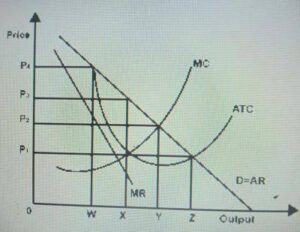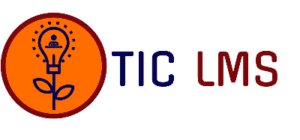2023 Economics
- A tariff is a tax imposed on
- A. Consumer goods
- B. Domestic goods
- C. Imported goods
- D. Exported goods
- The demand for a good is price inelastic if
- A. The price elasticity is less than one
- B. The price elasticity is one
- C. The price elasticity is negative
- D. The price elasticity is greater than one
- Which of the following is an example of free good?
- A. Free education
- B. Water in the ocean
- C. Dinner you did not pay for
- D. Your rented apartment
- The marginal propensity to consume is
- A. Options A, B and C
- B. ΔC/ΔY
- C. The slope of the consumption function
- D. Coefficient c in the equation C = C + cYd
- The short run can be defined as the period of time during which
- A. All inputs are fixed
- B. At least one of the firm’s input is fixed
- C. At least two inputs are fixed
- D. All inputs are variable
- The “velocity” of money is
- A. The real money supply divided by the real GDP
- B. The money supply multiplied by the price level
- C. The money supply divided by the price level
- D. The ratio of real GDP to the real money supply
- The part of income after tax that is not consumed is defined as
- A. Wages and salaries
- B. Saving
- C. Capital investment
- D. Nondurable goods expenditure
- An industry is
- A. A group of firms producing differentiated products
- B. A group of firms producing distinct commodities
- C. A group of firms producing related goods
- D. A group of firms producing unrelated goods
- The type of unemployment that occurs when an individual cannot find job as a result of obsolete skill is
- A. Structural unemployment
- B. Cyclical unemployment
- C. Seasonal unemployment
- D. Frictional unemployment
- The theory of …………… was propounded by ………………
- A. Comparative advantage; Mercantilists
- B. Absolute advantage; Adam Smith
- C. Comparative advantage; Adam Smith
- D. Absolute advantage; David Ricardo
- If a business’ total economic cost of producing 10,000 units of a product is N750,000 and this output is sold to consumers for N1,000,000, then the firm would earn
- A. A normal profit of N750,000
- B. An economic profit of N750,000
- C. A normal profit o N1,750,000
- D. An economic profit of N250,000
- One major problem facing West African countries is
- A. Relations with Colonial Masters
- B. Joint Military operations in Member States
- C. Political integration
- D. Financial crunch of Member States
- The development of an economic hypothesis through intuition, insight, or logic is associated with
- A. Deduction
- B. Policy economics
- C. Normative economics
- D. Induction
- A major factor contributing to productivity is
- A. Immigration of young workers
- B. The labour force
- C. The baby boom of generation
- D. The rate of GDP per year
- ………….is presently used in Nigeria to measure inflation
- A. GNP implicit price deflator
- B. Consumer price index
- C. Wholesale price index
- D. Real Gross Domestic Product
- The fundamental problem of economics is
- A. Finding striking determinants between the forces of supply and demand
- B. The scarcity of productive resources relative to society’s unlimited wants
- C. The establishment of a political framework to determine the what, how and for whom of production
- D. To establish an equitable distribution of income
17.

The diagram above represent
- A. perfect competition
- B. mononpoly
- C. demand curve
- D. competitive market
18.

What is the lowest price the monopolist can charge
- A. P2
- B. P1
- C. P3
- D. P4
19

The maximum price is
- A. P1
- B. P2
- C. P3
- D. P4
- Real cost is
- A. Alternative commodities forgone
- B. Amount of money spent on goods and services
- C. Cost of goods and services
- D. True cost
- ………………… is the highest body in ECOWAS organogram
- A. Authority of Head of State and Government
- B. The Executive Secretariat
- C. The Defense Council
- D. Council of Ministers
- Government uses all of the following ways to redistribute income, except
- A. Market intervention
- B. Transfer earnings
- C. Limited liability
- D. Taxation
- The principle that specified that the amount, when and how to pay tax should be made known to tax payer is known as
- A. Principle of economy
- B. Principle of convenience
- C. Principle of simplicity
- D. Principle of certainty
- Money could be defined as
- A. Options A, B and C
- B. Medium of exchange
- C. Settlement of debt
- D. Medium of payment
- Business cycle is associated with
- A. Recession
- B. Unemployment
- C. Seasonal variation
- D. Inflation
- Economic problem occurs when
- A. There is scarcity relative to demand
- B. All raw materials are imported
- C. Many people are out of work
- D. There are no buyers for our goods
- A ………… in the price of the domestic currency in terms of a foreign currency is referred to as ………….
- A. Decrease, appreciation
- B. Increase, de-appreciation
- C. Decrease, depreciation
- D. Increase, consolidation
- Among all the determinants of economic growth, the most important one is
- A. Human capital
- B. Increased GDP
- C. Land and Natural resources
- D. Technologies
- An increase in money income with constant price results in
- A. Outward shift in the budget line
- B. Inward parallel shift in the budget line
- C. Options A and C
- D. Budget line remain constant
- The law of supply states that, other things being constant, as price increases
- A. Supply increases
- B. Supply decreases
- C. Quantity supplied increases
- D. Quantity supplied decreases
- The demand for money will fall if
- A. People expect deflation soon
- B. Real GDP rises
- C. Real interest rates rise
- D. The GDP deflator rises
- Which of the following is an example of expansionary monetary policy by the Central Bank of Nigeria?
- A. Lowering income taxes
- B. Increasing the discount rate
- C. Increasing the reserve ratio
- D. Buying Treasury securities from commercial banks
- If commodities X and Y are substitute, their cross elasticity of demand will be
- A. One
- B. positive
- C. negative
- D. zero
- The term ‘investment’ in macroeconomics means
- A. Profit
- B. Total amount of money invested in bonds and stocks
- C. The total amount of capital goods in the country
- D. The production of goods for immediate consumption
- The following are economic agents in any economy EXCEPT
- A. Central Bank
- B. House hold
- C. Firm
- D. Government
- One major criticism of foreign aid to developing countries is that it
- A. Gives too much power and control to world bank
- B. Encourages growth in government bureaucracy
- C. Is capital using rather than capital saving
- D. Provides incentives for capital flight
- Public corporation is financed with
- A. Capital raised from shareholders
- B. Tax payer’s money
- C. Capital raised from stock exchange
- D. Capital contributed by owners
- The type of price elasticity of demand for a commodity whose quantity demanded remain unchanged despite changes in the price is
- A. Perfectly elastic
- B. Infinitely elastic
- C. Inelastic
- D. Perfectly inelastic
- An increase in total production (real GDP) causes the demand for money to ______and the interest rate to _________
- A. Increase; decrease
- B. Decrease; decrease
- C. Increase; increase
- D. Decrease; increase
- Part-time workers who desire full-time employment are:
- A. Underemployed and contribute to the unemployment statistic
- B. Underemployed but do not contribute to the unemployment statistic
- C. Not part of the labour force and do not contribute to the unemployment statistic
- D. Cyclical unemployment
- Which of the following is the resultant effect of a fall in the profit margin of producers in an economy?
- A. Unemployment will fall
- B. Unemployment will remain constant
- C. Unemployment will increase
- D. Unemployment will fluctuate
- Indicator of underdevelopment is
- A. high life expectancy
- B. low birth rate
- C. low population growth rate
- D. low per capita income
- The decision to consume more of one product under normal circumstances will apply
- A. less of another product will be consumed
- B. more of another product will be consumed
- C. less of the product will be consumed
- D. no other products will be consumed
- Identify one of the following which can NOT be used to close deflationary gap
- A. Increased interest rate
- B. Increased money supply
- C. Increase government expenditure
- D. Reduction in taxes
- An increase in nominal income without increase in price will result to
- A. increased real income
- B. increased GDP
- C. decreased real income
- D. decreased GNP
- If demand function for a product is Qd = 30 – 4P, and the price and quantity of products is 4 and 14 respectively. What is the price elasticity of demand for the product?
- A. 1.14
- B. 7.1
- C. 14.1
- D. 1.7
- Macroeconomics focuses on the following units in an aggregative manner
- A. household, firms, government, corporate sector and external sector
- B. individual consumers, individual firms, government and external sector
- C. government, household firms, individual consumers and external sector
- D. individual consumers, household firms and manufacturing sector
- Which of the following would not be a reason for a government to impose a quota on imports?
- A. To support strategic industry
- B. To prevent dumping
- C. To decrease tax revenue
- D. Employment oppourtunity
- The economies of West African Countries depend majorly on
- A. primary product
- B. secondary product
- C. tertiary product
- D. manufacturing product
- When a generalization is made based on observed facts, it is
- A. inductive reasoning
- B. normative reasoning
- C. theoretical reasoning
- D. deductive reasoning

